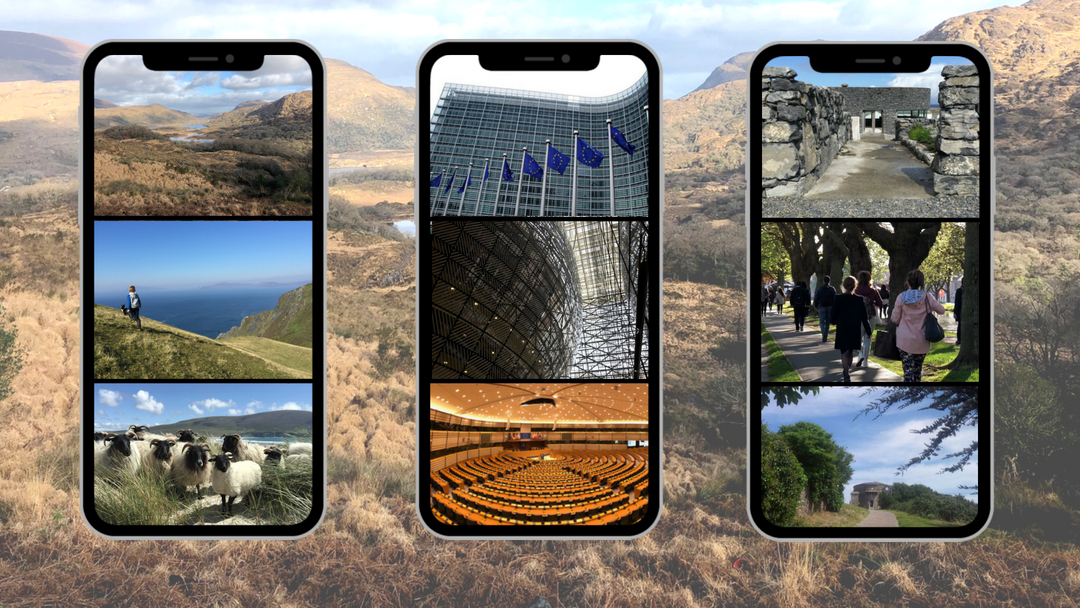By
LOUISE DENVIR

As audiences migrate toward consuming their news via social media, engaging short-form ‘digital-first’ content has never been more important. You only have to look at how news stories are being reformatted, specifically for social platforms, to see how it has already become the new normal.
Short-form videos are only a few minutes long, if not less. The BBC, for example, now tells full video news stories in under sixty seconds on their Instagram channel, using captions, subtitles, graphics, photographs and video clips. Earlier this year RTÉ released their 2018-2022 strategy which detailed how short-form video is now a priority for the broadcaster.
At PR360, our teams produce engaging short-form video and audio with social media and digital platforms in mind. Where once the press release was the central pillar for PR, video and audio have become essential parts of the modern communications toolkit.
For many journalists, broadcasters and communicators, one of the most efficient ways to produce content and news stories for social media has become ‘mobile journalism’, or ‘MoJo’ as it’s commonly known.
MoJo allows journalists to record and edit broadcast quality footage on their smartphones. Take, for example, journalist Philip Bromwell’s excellent report for RTÉ News:
A Dublin sailor is hoping to become the first Irish person to sail solo, non-stop around the world pic.twitter.com/5zFu9F6wDF
— RTÉ News (@rtenews) June 7, 2018
If the above video is the first you’ve seen from Philip on MoJo, be sure to follow him on Twitter @philipbromwell where he regularly posts and highlights content he has shot and edited on his phone. Scroll through his feed and you might recognise some of his older reports. Would you have guessed they were filmed on an iPhone?
MoJo is changing media and PR
I was at the MoJoFest conference in Galway recently, organised by one of the first MoJo advocates in Ireland, Glen Mulcahy. Well-known journalists from around the world gathered to discuss how they are using new technologies to communicate with their audiences and tell their stories in short form.
Philip was at MoJoFest too, and his presentation on his work for RTÉ News and other platforms stood out. He is one of the first TV broadcasters in Ireland to bring footage, recorded on an iPhone, straight from a smartphone to the Six One News.
Philip Bromwell at #mojofest greeted on stage like a rock star by the audience; as a thought-leader in the area, who is so generous with advice and guidance, there’s a reason why! If you don’t know his #mojo work: https://t.co/DuUWmKLf14 pic.twitter.com/lDI2UnrXVB
— Louise Denvir (@LouiseDenvir) May 31, 2018
Naturally, the early adapters of MoJo have been primarily journalists, but it’s a technology and skillset that can be applied by communicators in every industry, including PR. There are plenty of Irish politicians, CEOs and business leaders who have fallen for its charms, as well.
Many brands still associate video and audio content with high production costs. This isn’t the case anymore. In a world of mobile video, where high quality and efficiency go hand-in-hand, the smartphone’s output has become a worthy addition to an organisation or individual’s multimedia offering.
MoJo can be used for simple social media shorts, like this post I created while recording a radio report on a farm recently. It’s short, sweet and effective.
Where are the sheep? Where are the sheep? Where are the sheep? There are the sheep!
Toby watches over 600 ewes, 100 rams, nearly 1,500 lambs and some cattle too, on William Hutchinson’s farm in Kilkenny. Recording there today for tmrw’s @RTECountryWide pic.twitter.com/diirf71pkX
— Louise Denvir (@LouiseDenvir) March 30, 2018
High-spec video production and MoJo are working side-by-side in newsrooms and businesses in both Ireland and the UK—and now indeed in the PR360 office. It’s a testament to the new technology.
If you’re interested in exploring what mobile video can do for your brand, get in touch with us.
